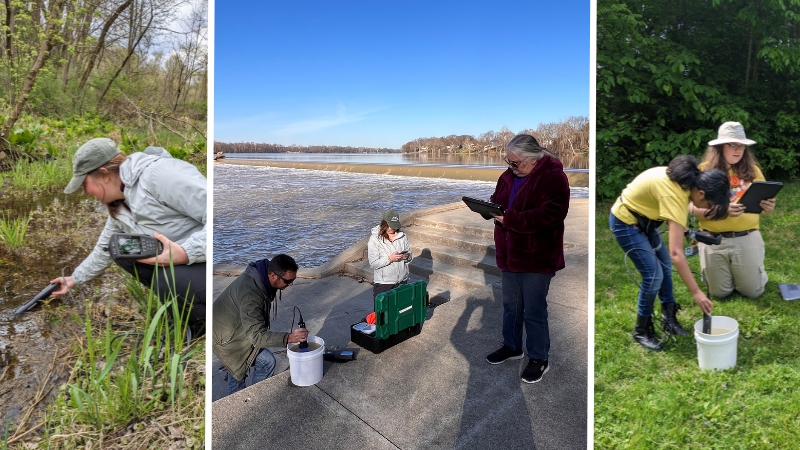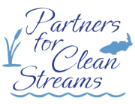 Thanks to a grant last year from Greater Toledo Community Foundation, we kicked off a multi-agency program called Community Water Action in Toledo (CWAT) that is streamlining volunteer water quality monitoring in our region of the Lake Erie basin. Monitoring season started in April and will continue through October. Learn what volunteers have accomplished so far.
Thanks to a grant last year from Greater Toledo Community Foundation, we kicked off a multi-agency program called Community Water Action in Toledo (CWAT) that is streamlining volunteer water quality monitoring in our region of the Lake Erie basin. Monitoring season started in April and will continue through October. Learn what volunteers have accomplished so far.
The CWAT program allows us to sync up partner organizations’ (Metroparks Toledo, TMACOG, Toledo Zoo, and Toledo Rotary) water monitoring programs by sharing training resources, engaging in volunteer outreach, aligning sampling protocols, and evaluating program success. Kat Kieffer, our Water Monitoring Coordinator Intern, works at the nexus of CWAT’s partnerships.
“Aligning sampling protocols” means making sure different groups all use the same water sampling tools and the same process, standardizing data collection to share it not only across our region, but with other groups around Lake Erie. Our program uses a set of standards called the Lake Erie Baseline Assessment Framework (LEBAF), developed by the Lake Erie Volunteer Science Network, led by Cleveland Water Alliance.
CWAT partners use a type of probe called “YSI Pro DSS.” They measure conductivity, pH, water temperature, and dissolved oxygen. Erie Soil and Water Conservation District, the organization who mentored our staff in creating sampling protocols, described these metrics as taking the vital signs of the waterways, like a patient in triage at an emergency room. These are the baseline parameters for the health of the waterways; they indicate the types of organisms that can survive in our water.
Sampling kicked off in April with three training days for staff from TMACOG, Metroparks Toledo, and the Toledo Zoo. CWAT partners sample 20 sites in all: 9 on Swan Creek, 5 on the Ottawa River, and 7 on the Maumee River. Since April, all sites have been successfully sampled at least once a month. While partner coordination continues to evolve, CWAT is off to a strong start!
